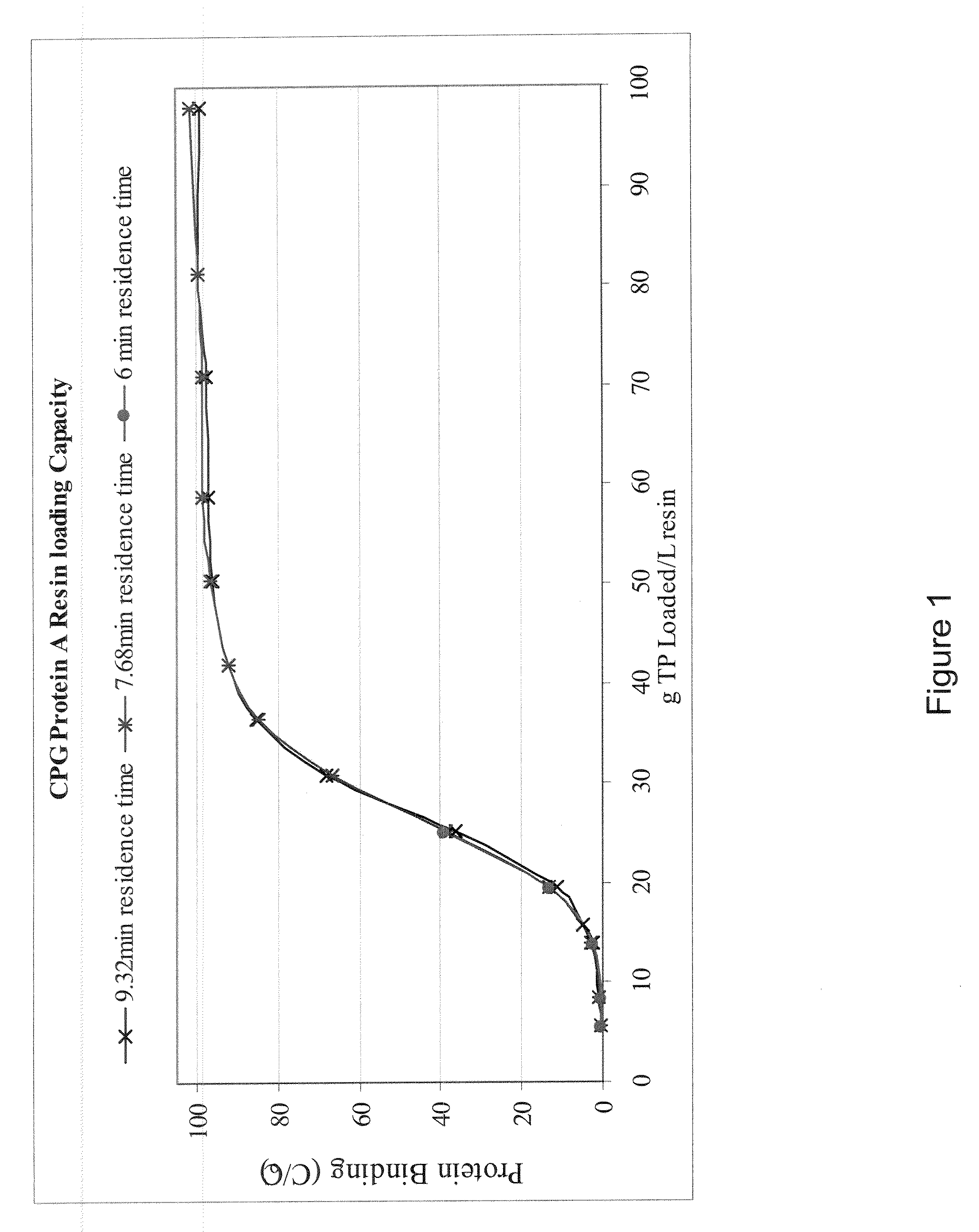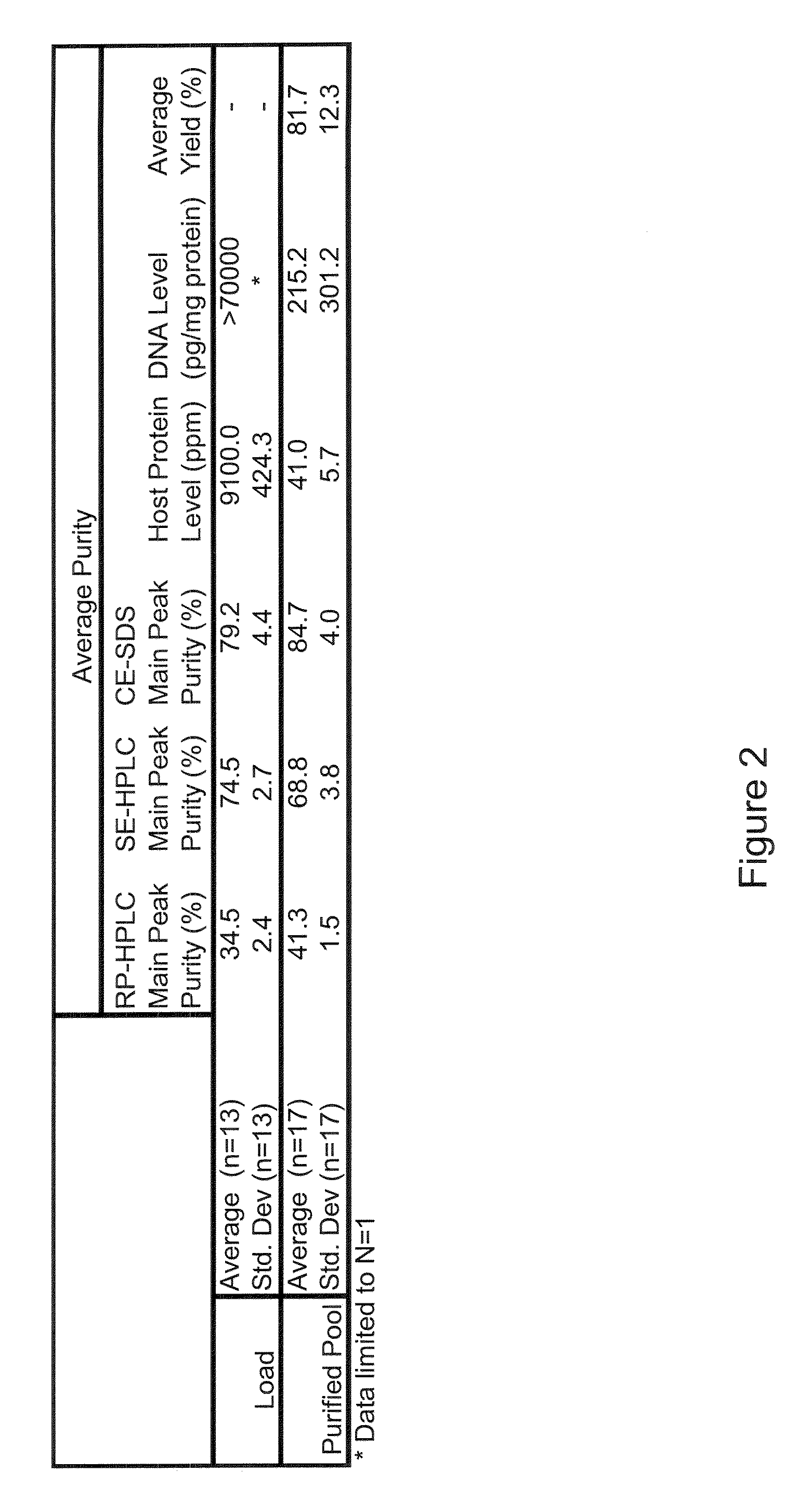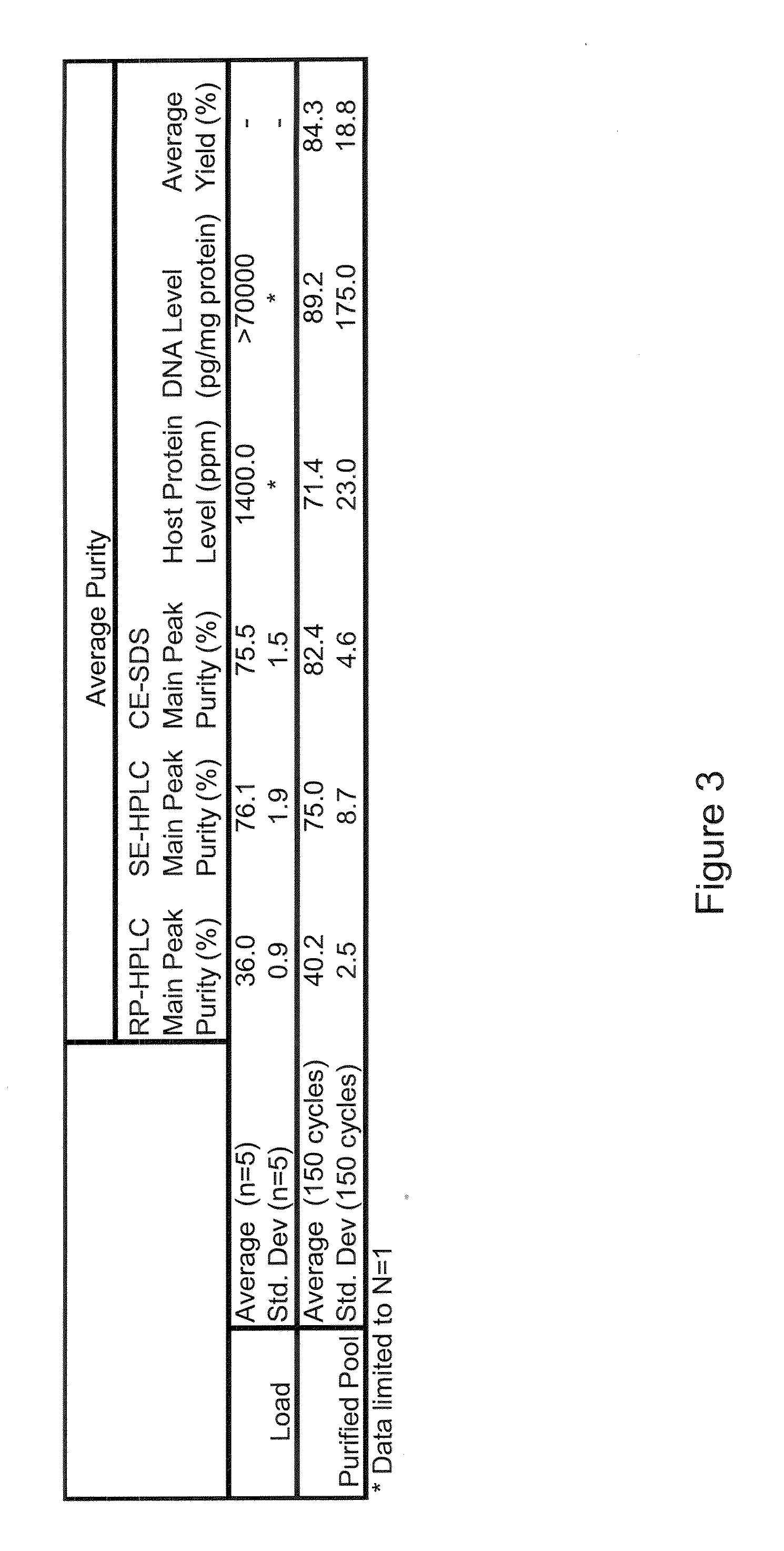Capture purification processes for proteins expressed in a non-mammalian system
a technology of purification process and protein, which is applied in the field of purification process of proteins expressed in non-mammalian systems, can solve the problems of consuming time and resources, and needing a minimum amoun
- Summary
- Abstract
- Description
- Claims
- Application Information
AI Technical Summary
Benefits of technology
Problems solved by technology
Method used
Image
Examples
example 1
Direct Capture of Proteins Expressed in a Soluble Form Using Protein A Affinity Chromatography
[0109]The following experiment demonstrates that a protein comprising a plurality of polypeptides joined to an Fc moiety can be separated from an E. coli cell lysate slurry using a Protein A affinity media.
[0110]A protein comprising a plurality of polypeptides joined to an Fc moiety was expressed in an E. coli fermentation induced at 30° C. and driven to express soluble-form protein product. The fermentation broth was centrifuged, the liquid fraction removed, and the cell paste was collected. The cells were resuspended in a 10 mM potassium phosphate, 5 mM EDTA; pH 6.8 buffer solution, to approximately 100% of the original volume. The cells were then lysed by means of three passes through a high pressure homogenizer. After the cells were lysed, the cell lysate was filtered through a 0.1 μm filter to reduce particulate levels. The material was then stored in a closed bottle for ˜24 hours at a...
example 2
Capture of a Fc-Containing Protein Expressed in a Limited Solubility Form from a Refold Mixture Using Protein A Affinity Chromatography
[0116]The following experiments demonstrate that an Fc-containing protein can be separated from a refold mixture comprising glycerol, guanidine, urea, and arginine using Protein A affinity media.
[0117]In one experiment, a recombinant protein comprising a biologically active peptide linked to the C-terminus of the Fc moiety of an IgG1 molecule via a linker and having a molecular weight of about 57 kDa and comprising 8 disulfide bonds, in a non-mammalian expression system, namely E. coli, harvested, refolded under appropriate conditions, and captured using Protein A affinity media.
[0118]The growth media in which the cells were growing was centrifuged and the liquid fraction removed, leaving the cells as a paste. The cells were resuspended in water to approximately 60% of the original volume. The cells were lysed by means of three passes through a high ...
example 3
Separation of an Fc-Containing Protein from a Refold Mixture Using Cation Exchange Chromatography
[0130]The following experiments demonstrate that an Fc-containing protein can be separated from a refold mixture comprising glycerol, guanidine, urea, and arginine using cation exchange media.
[0131]In one experiment, a recombinant protein comprising a biologically active peptide linked to the C-terminus of the Fc moiety of an IgG1 molecule via a linker and having a molecular weight of about 57 kDa and comprising 8 disulfide bonds, was expressed in a non-mammalian expression system, namely E. coli, harvested, refolded under appropriate conditions, and captured using cation exchange media.
[0132]The growth media in which the cells were growing was centrifuged and the liquid fraction removed, leaving the cells as a paste. The cells were resuspended in water. The cells were lysed by means of multiple passes through a high pressure homogenizer. After the cells were lysed, the lysate was centri...
PUM
| Property | Measurement | Unit |
|---|---|---|
| residence time | aaaaa | aaaaa |
| residence time | aaaaa | aaaaa |
| residence time | aaaaa | aaaaa |
Abstract
Description
Claims
Application Information
 Login to View More
Login to View More - R&D
- Intellectual Property
- Life Sciences
- Materials
- Tech Scout
- Unparalleled Data Quality
- Higher Quality Content
- 60% Fewer Hallucinations
Browse by: Latest US Patents, China's latest patents, Technical Efficacy Thesaurus, Application Domain, Technology Topic, Popular Technical Reports.
© 2025 PatSnap. All rights reserved.Legal|Privacy policy|Modern Slavery Act Transparency Statement|Sitemap|About US| Contact US: help@patsnap.com



